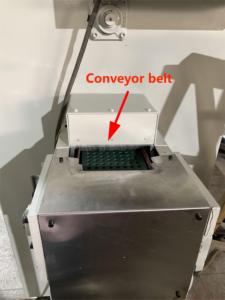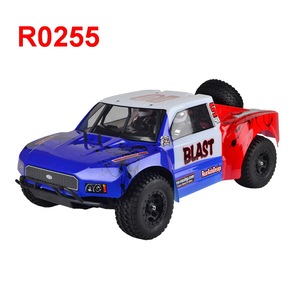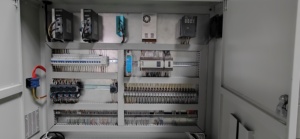Types of A M Blasts
A m blast refers to the process of forcibly propelling fine bits of abrasive material against a surface under high pressure using compressed air. It has many applications, especially in the metal surface treatment industry. According to research, the global market of abrasive blasting machines was valued at around USD 2,270 million in 2022 and is projected to reach USD 3,580 million by 2028, exhibiting a CAGR of 8.1%.
There are many types of abrasive M blasts, namely:
-
Dust-free sandblasting machine
A disciplosed sandblasting machine is a cabinet used in a closed sandblasting machine to contain all dust. It is the opposite of a demachined or open-sandblasting machine, where all dust is blasted into the open environment. This is often a more unhazardous approach to abrasive blasting. Demachineds are also often more efficient and increasingly popular. Please note that this is not a method to make sandblasting safer; less, air pressure control within the booth is often lower, but it does help to make it easier to sell fresh reliance glass media.
-
Fixed abrasive blasting machine
This abrasive blast machine is one of the most popular ones around the world. A fixed abrasive blasting machine is one in which the abrasive is not propelled by air but is projected by other machine parts. It happens in a machine with a set of centrifugal wheels, further known as turbines, which move the abrasive around in a blasting flash.
-
Open sandblasting machine
Also known as a drag machine, an open machine allows all the dust created throughout the blasting process to be released into the open environment.
-
Wet sandblasting machine
Also known as underwater granulation, this is basically a method that uses a mixture of water and abrasives, such as sand, steel grit, and glass or aluminium oxide grit, to perform the blasting process.
-
Portable sandblasting machine
This machine is portable, unlike many other blasting machines that are fixed and sometimes immobile. This is made possible by having one of the three common types of blast generators - towable, skid-mounted, or portable.
-
Gravity-fed abrasive blasting machine
As the name machine implies, this is a type of blasting machine where the abrasive is blasted using the force of gravity. The filler material in the blasting machine is often stored in a container or hopper that is open at the top. As soon as the container or hopper is tilted to one side, the material inside it moves or falls down towards the opening due to gravitational pull.
Specification and maintenance of A M blast
Specifications
- Capacity: The amount of abrasive material the machine can hold. It usually ranges from 50kg to a ton, depending on the type and model of the machine.
- Working Pressure: It is the pressure at which the machine operates, usually between 0.1 and 0.5 MPa. Different tasks require different pressures to achieve distinct outcomes.
- Flow rate: It indicates how much quantity and the amount of abrasive material are fumigated per minute, affecting production efficiency. Smaller machines typically have a lower flow rate than larger industrial-grade models.
- Abrasive types: Different machine models suitable for specific abrasive materials, such as sand, steel shot, etc. Some machines can even blend different abrasive combinations to achieve the desired effects.
- Dust Collection System: The specification describes the capacity and efficiency of the dust collection system, which is responsible for recovering and filtering the abrasive material and dust generated during the sandblasting process.
Maintenance
- Weekly Inspection: Conduct a regular inspection, checking whether the air source and water source pipeline connections are correct and whether there is leakage. Inspect the overall equipment appearance, promptly removing debris, and clean the equipment to ensure proper ventilation and heat dissipation.
- Monthly Maintenance: Clean the air compressor intake filter element to ensure the machine receives clean air. Check whether the fasteners of each part are loose and tighten the parts if necessary. Meanwhile, inspect the electrical components of the spray gun, including connections and contacts, ensuring there are no signs of corrosion or loosening.
- Quarterly Overhaul: Thoroughly clean the dust collection system, including the dust container and filter elements, to prevent clogging. Check the spray gun's wear and tear, including the nozzle, venturi, and electrode rod. Replace them if they are damaged or deformed. In addition, inspect the air compressor's lubricating oil and replace it according to the oil change interval to ensure proper operation.
Scenarios of AM blasts
There are many applications for air compressor abrasive blasting. Some of them are mentioned below:
- African AM blasting is useful for cleaning surfaces. They are perfect for painting and coating removals for steel, concrete, and other surfaces. They can also eliminate rust and corrosion from metal surfaces. The air compressor abrasive AM blasting can clean substrates before coating them for better adherence.
- An air compressor AM blasting can etch smooth surfaces to make them rough for better adherence of coatings. The AM blasting works perfectly for etching glass, marble, granite, and concrete.
- The AM blasting Abrasive bullets are used for a gentler form of blasting that doesn't harm the object's integrity. This abrasives are suitable for automobile restoration or enhancement, as they won't harm the panels' or parts' metal. The AM blasting is perfect for removing paint, corrosion, and oxidation on metal parts. The abrasive can also clean and strip paint off classic cars' bodies and fiberglass parts.
- The AM abrasive blasting is extensively used in the manufacturing industry to clean and prepare substrates. They are perfect for improving a metal's surface profile for better adherence of the paint or coating. The AM abrasive is also used to remove oxidation for metallic molds and improve their life span. Molds are frequently made of metal, which can get smoother and rusted over the years of use. By regularly AM blasting the molds, they can look new and perform better.
- Restorers of Stone and marble monuments use the AM blasting to remove residues and deposits of pollution that harm the monuments. AM blasting is used to remove mold and other impurities from marble and wooden monuments.
- The maritime industry resorts to AM blasting when they have to prepare surfaces before painting. Boats' hulls are frequently subjected to corrosive elements like salt and water.
How to choose an ammo blast machine
Consider the following key factors before purchasing an ammo blast machine for business needs.
- Business requirements: Determine the business's specific requirements, such as the type and size of workpieces, the quantity to be processed, and the desired surface quality. These factors can help them choose a blast machine that matches their needs.
- Blast media compatibility: Different ammo blast machines are suitable for different types of blast media. Ensure the chosen machine is compatible with the media to be used, whether steel shot, sand, aluminum oxide, or other media.
- Machine size and capacity: Consider the size and capacity of the machine. Ensure it can handle the business's workpiece size and quantity while also fitting into the operating space.
- Cleaning efficiency: Different blast machines have different cleaning efficiencies. Look at the machine's design, operating speed, and other factors to choose a machine that provides the required cleaning efficiency.
- Energy consumption: Consider the energy consumption of the blast machine. Choose one with reasonable energy consumption to help reduce operating costs and environmental impact.
- Ease of operation and maintenance: Select a machine that is easy to operate and maintain. This choice can improve work efficiency and reduce downtime. Consider features such as automated functions, user-friendly controls, and accessible maintenance points.
- Safety features: Ensure the selected ammo blast machine has adequate safety features, such as emergency stop buttons, safety interlocks, and proper device guards. These safety elements can help protect operator safety.
Q & A
Q: What surfaces can an am/mb blast clean or prepare?
A: The machine can clean various surfaces such as concrete, steel, brick, road, and floor. Furthermore, it can even remove undesirable materials like paint, rust, asphalt, epoxy, and carbon.
Q: What kind of abrasive materials can be used in an am/mb blast?
A: The am/mb blasts use abrasive materials such as steel grit, glass beads, aluminum oxide, walnut shells, and silica sand, depending on the machine type and the surface to be treated.
Q: What are the benefits of using an am/mb blast?
A: The machine enhances surface adhesion, removes pollutants, improves oxidation resistance, prepares surfaces for painting or coating, and restores the integrity of the substrate or surface.
Q: Can an am/mb blast be used for tasks other than surface cleaning or preparation?
A: Yes. Depending on the type and blasting media used, the machine can également be employed for surface engraving, restoration, and resurfacing, among other tasks.




















































































































































































